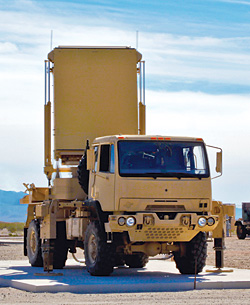INDIAN ARMED FORCES CHIEFS ON OUR RELENTLESS AND FOCUSED PUBLISHING EFFORTS

The insightful articles, inspiring narrations and analytical perspectives presented by the Editorial Team, establish an alluring connect with the reader. My compliments and best wishes to SP Guide Publications.

"Over the past 60 years, the growth of SP Guide Publications has mirrored the rising stature of Indian Navy. Its well-researched and informative magazines on Defence and Aerospace sector have served to shape an educated opinion of our military personnel, policy makers and the public alike. I wish SP's Publication team continued success, fair winds and following seas in all future endeavour!"

Since, its inception in 1964, SP Guide Publications has consistently demonstrated commitment to high-quality journalism in the aerospace and defence sectors, earning a well-deserved reputation as Asia's largest media house in this domain. I wish SP Guide Publications continued success in its pursuit of excellence.
- Indian Air Force Aims for Full Indigenous Inventory by 2047 — Air Chief Marshal A.P. Singh
- General Upendra Dwivedi takes over as the Chief of the Army Staff
- Rajnath Singh assumes charge as Defence Minister for the second consecutive term
- Admiral Dinesh K. Tripathi assumes Command of the Indian Navy as 26th Chief of the Naval Staff
- Prime Minister witnesses 'Bharat Shakti' – a Tri-Services Firing and Manoeuvre Exercise in Pokhran, Rajasthan
EQ-36, weapon locating radars

Weapon locating radars are designed to track the trajectory of incoming projectiles like shells, rockets and mortars with the aim of locating their geographical origin and then bombard them with artillery fire to destroy the weapon systems. Before the advent of radars, systems based on sound and flash were used to locate the source of bombardment. The technique was known as sound ranging and flash spotting.
The first radar acquired by the Indian Army was a modified air defence fire control radar Superfledermaus followed by Cymbeline. The current technology has become much more advanced like the US TPQ-36 and 37 Fire finder radars made by Hughes (now Raytheon). The TPQ-36 radar is designed for a medium range of 24 kilometres and the TPQ-37 can locate longer-range systems including surface launched missiles, up to a range of 50 kilometres. India had acquired TPQ-37 in 2007 and have also developed it’s own mobile weapon locating radar based on phased array.
EQ-36
During September 2006, Lockheed Martin announced a $120 million ( Rs. 540 crore) contract to provide the US Army with five Enhanced AN/TPQ-36 radars, otherwise known as the EQ-36 Counter fire Target Acquisition Radar. This actually is completely new radar system in a two vehicle configuration, one vehicle carries the Mission Essential Group, containing the radar antenna and the power generator. The second vehicle carries the Sustainment Group, with a climate controlled, operations controlled shelter and backup power generator.
The operations centre allows the radar to link back to Army command systems and is also Indirect Fire Protection Capability compatible in countering rocket, artillery, and mortar attacks. Crew of four can operate EQ-36 remotely using a pair of ruggedised Linux laptop computers, or from the fully equipped climate-controlled shelter. It can come into action in five minutes and out of action in two minutes. The EQ-36 includes a number of improvements, including 360 degree coverage capability instead of the TPQ-36’s current 90 degrees, and dramatic reductions in false alarm rates. Army Contracting Command intends to procure EQ-36 radar systems to replace AN/TPQ-36 and 37 radars.
The planned production schedule for this five-year contract is currently set to 12 LRIP (Low Rate Initial Production) units in FY13, 23 LRIP units in FY15, and 32 FRP units in FY16, for a total of 67 systems. Over the longer term, the potential exists for $1.6+ billion ( Rs. 7,200 crore) in orders, covering more than 180 radars. The response to the US Army’s tenders is expected by the middle of September 2011. US Army had first deployed them in Iraq and Afghanistan during October 2010.
Lockheed Martin’s Samarai and Aerovel’s Flexrotor
The idea that very small UAVs might have practical uses germinated during the 1990s. Later on, this was also discussed during a DARPA workshop under the subject ‘mobile micro robots’. Gradually the idea caught on but the size was confined to hand held UAVs. As usual the US lead the research and the current development by Lockheed Martin really challenges the imagination by displaying innovative and unique designs. One of the important functions of seeds and fruits is dispersal to establish the embryo-bearing seeds in a suitable place and one of the mechanisms for seed and fruit dispersal is floating in the wind.
Lockheed Martin has been inspired by Sycamore seeds and their UAV mimics the aerial movement of the seed. Samarai is a one-winged drone which is one feet in length and flies using a cyclic lift motion like a helicopter. Simple in construction, it has just two moving parts and a camera and can be flown remotely or through a tablet. It can also be thrown like a boomerang for quick deployment, dropped from a plane, or it can take off vertically and hover in place. It has taken five years for development. Earlier it was to be made the size of a seed, with two gram payload, but it has been developed into a foot long configuration. It can stream back live 360 degree video without a gimbal. However, range and speed are inherent limitations of a UAV based on a helicopter design.





